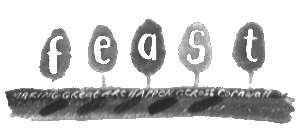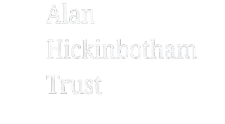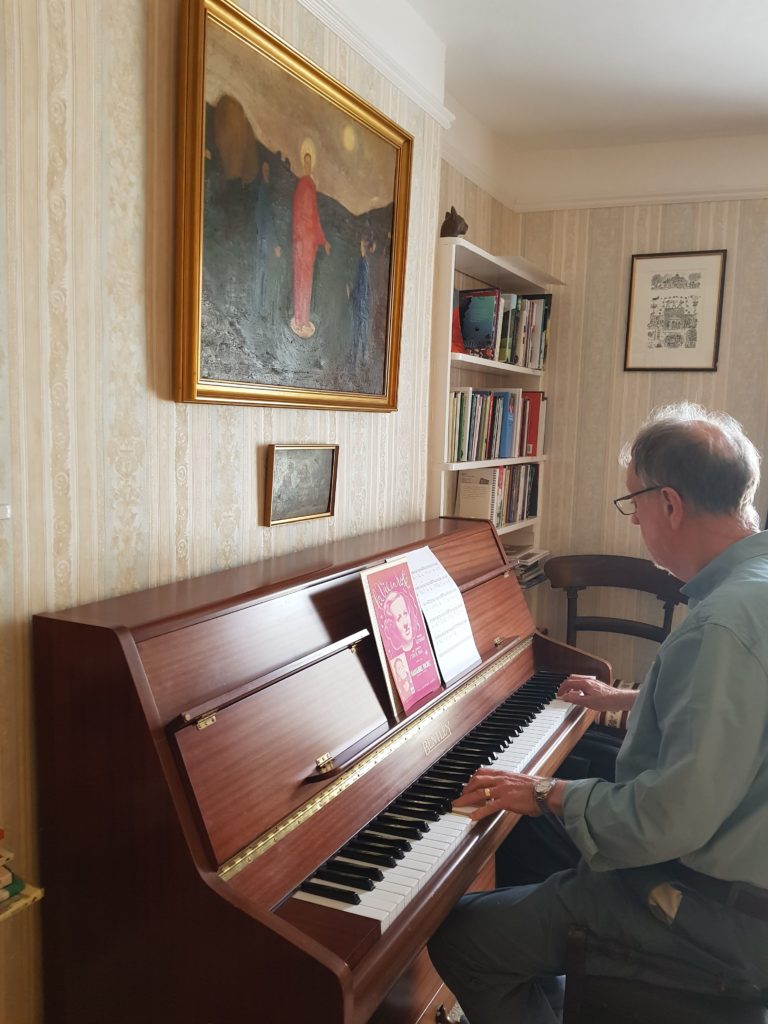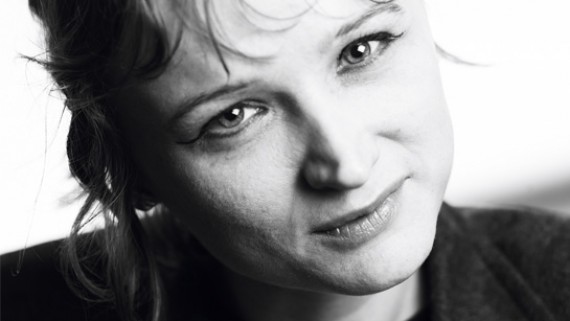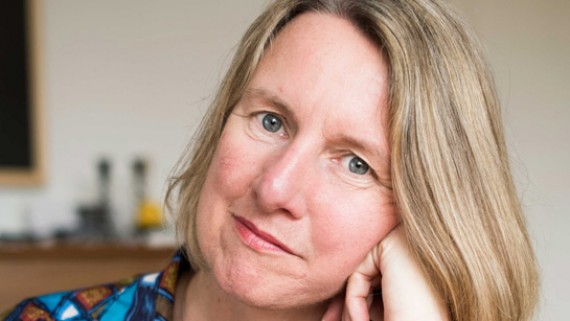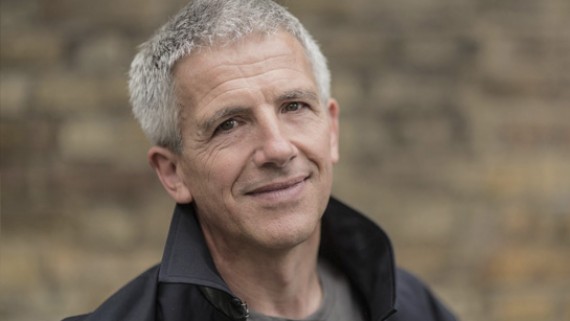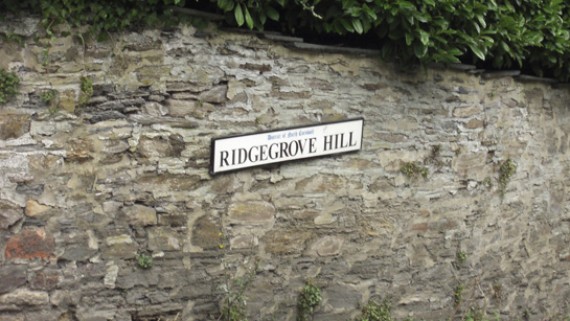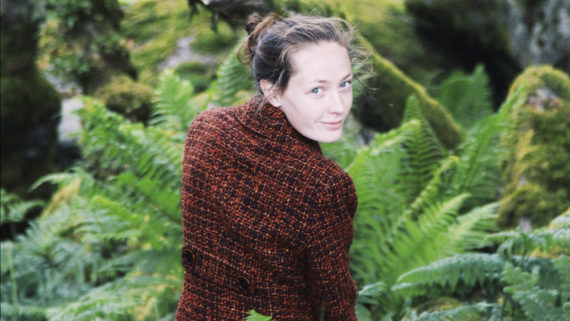Time and the hour thinned away…(1)
…as I pass through 13th-century Southgate Arch and turn left at the 1930s Red Room Café down Angel Hill (2) – steep and narrow as in some Tuscan hillside villagio (where it would be Collina dell’Angelo) and across Dockacre Road, deeper yet, into the shady, almost overgrown greenery that is the secretive “sacred grove” of Ridgegrove Hill.
Time Travel
Time thinning away almost six years to my first coming here to Cyprus Well. “I / Turn to it as to / A spring that has / Not failed me”(3), just as Charles Causley turned to the poetry of WS Graham, though it’s the house itself that has been an unfailing source for me over that time (as Charles put it, “My house, named after the Saxon spring” (4).
An unfailing source of more than just poetic inspiration, especially in 2017 when I was “centenary year” Poet/Musician in Residence writing Celtic and jazz settings for some of Charles’s poems, and working with local musicians, and schools (Launceston College and Wadebridge School) to create words-&-music talks/events – with my wife, poet Anne-Marie Fyfe – for the Causley Festival, Tamar Valley Festival, Cornwall Folk Festival and Charles’s “100th Birthday” celebrations at Launceston Castle. We then took versions of that performance to Edinburgh Book Festival, Poetry Society in Covent Garden, The Troubadour in Earl’s Court and poetry groups and festivals around the country).
But time thins away further back yet to the 1980s and hearing Charles present BBC Radio 4’s weekly Poetry Please, and telling, one Sunday, of a poetry reading where he read of a visit to his cousins (5):
We couldn’t make any more of each other
Than the map of stains on the bedroom wall
only to be approached at the book-signing afterwards by an audience member who asked, “Why did you have a map of Staines on the wall?”
…and thins back yet again to my own 1970s schooldays when I first set Charles’s “Ballad of the Bread Man” to a Blues-piano “St. James Infirmary” for a school assembly…
Time and Space
Part of the magic is the Tardis effect – not just in terms of time travel, of “time and the hour [thinning] away”, but the business of dropping down out of the busy town (a town whose morning buzz I love, as a small-town boy who’s lived in London so long) into the almost-secret-garden that is woody, leafy Ridgegrove Hill, down to an unassuming doorway under a Victorian gaslight fitting, of stepping into a small sitting room unchanged since Charles’s day – since his mother Laura’s time, in many ways – and of then stepping through to Charles’s “bright glass cabin” (6) (or rather the modernised, light-filled kitchen and small conservatory that his glass cabin was to become thanks to the Causley Trust) with its rich and lovely views of the steep garden below, “evergreen and green and green” (7) and across the Kensey Valley, “Frosted by ancient October / Where ice like iron rims the shadows…” (8), with Dockacre (9) high above to the left, and Lanstephan in the distance, bright in morning mist, or with house-lights piercing autumn dark.
I’ve been back to Cyprus Well, that unfailing spring, several times since the centenary-year residency (sometimes alone, sometimes with Anne-Marie), writing weeks/fortnights, following up research into Charles’s papers at Exeter University’s Special Collections. And we were back for Anne-Marie’s 2018 Causley Festival talk on her “coastal” work in progress that would take her from Cornwall to, among other locations, the Western Isles, Martha’s Vineyard, Maine, Nova Scotia, Cork, Wexford, Swansea, Felixstowe and Orkney (Charles, according to his letters and postcards, never made the long promised journey to his friend George Mackay Brown’s St. Magnus Festival there!)
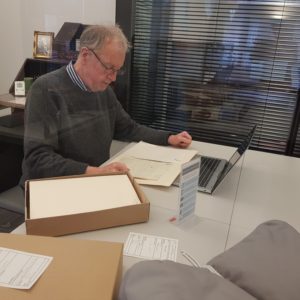
Researching Charles’s papers in the Exeter University Library Special Collections. (📷Anne-Marie Fyfe)
But coming back to this special source again has me reconsider what makes Cyprus Well such an inspiring place. Can’t speak for Anne-Marie, writing in the spacious main bedroom upstairs with the wider panorama of the valley, on her latest project – though we walked our familiar walks together, across the Tamar into Devon and back by Polson, down Ridgegrove Hill and back by Ridgegrove Lane or the new bridge to Newport, and endless winding walks through the town‘s quiet night-streets. And we explored Fowey, Gribbin Head, Menabilly, Dozmary Pool, Jamaica Inn, the Cheeswring and Port Isaac again (our daughter handled the publicity for both Fisherman’s Friends film-releases so Port Isaac’s firmly on the family’s go-to list!)
Inspirations
Inspirations, for me, over the past fortnight have been: discovering new gems in Charles’s diaries (in the Exeter Special Collections) including a pasted-in newspaper cutting of a Louis MacNeice wartime poem and notes about his shipmates reading MacNeice, and about films they saw in Gibraltar (I’ve blogged previously about MacNeice and Charles’s Irish influences here); re-experiencing the power of “a poet’s place” (see Musing on Poetry and Place, another of my Causley Trust blogs); working again in the study with Charles’s piano, his LPs and his sheet music, the room where I wrote, and with others, made, so much music, in the spring and summer of 2017 (no, there isn’t a link – the story of Charles Celtic/jazz/dance-band influences that we’ve told many times in performance isn’t, yet, published).
Object Lessons
And, of course, the business of being among the objects and artefacts that inspired, or simply surrounded, a fellow-poet of my father’s generation (which I explored in Possession: A Poet’s Things), was part of the inspiration for the poetry collection I’ve written since, partly on Achill Island in County Mayo, partly in Texas and North Carolina on long sojourns there, and back home in Chiswick, West London.
That collection, Beautiful Lofty Things was published in April by Salmon Poetry with their “jumping fish” (10) logo (the salmon signifies knowledge in Celtic traditions!). And my work on the WB Yeats Artwork Project in Chiswick’s Bedford Park where we live, culminated recently in the grand unveiling of a spectacular Conrad Shawcross artwork, with poetry, music, guests (Rowan Williams, the Irish Ambassador, the artist, our local Mayor, vicar, Buddhist leader etc), and Yeats readings from actors – Ciarán Hinds, Jeremy Irons, Ruth Negga, Sinéad Cusack – and from local schoolchildren.
So what better place to draw breath, to pick up on my Causley research, and to start on a new series of poems about which, of course, one cannot speak until they’re out there in the world, than at Charles’s inexhaustible well-spring.
A Poet’s Work
Except to mention one further inspiration: one only has to think of Charles’s amazing capacity for thought, knowledge, life, and the world – it’s all around one in the house, and in the poems – and then to see him walking up steep Ridgegrove Hill (best done in a zig-zag, Jim Causley explained to me) some dark and hazardously icy morning, to teach in the local primary school.
Which leads me to remember all the poets whose quotidian calling – unlike the patronised Celtic bards or the occasional Poet Laureate – wasn’t poetry itself, but bank clerk, farm hand, customs officer and, not infrequently, schoolteacher. Something about the dayjob, and pride in the dayjob and its worth to the community, that sets Charles’s poetry alongside that of most poets writing today, and sets it apart both from the elitism of his time and of more recent “academic” poetry.
Something new to think about, to write about, as there always is at Cyprus Well, that “spring that has not failed me”…
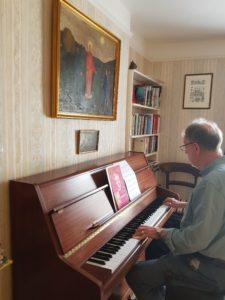
Back at Charles’s piano in the study. (📷Anne-Marie Fyfe)
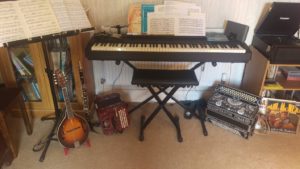
Charles’s study with some of my instruments in my 2017 poetry-&-music residency
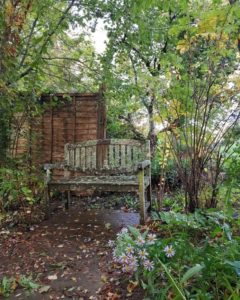
And evergreen and green and green: the garden at Cyprus Well (📷Anne-Marie Fyfe)
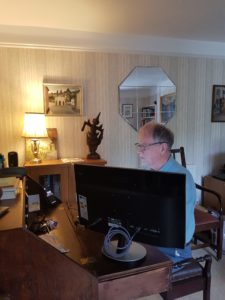
Back at Charles’s desk where the first poems in”Beautiful Lofty Things” were inspired. (📷Anne-Marie Fyfe)

With Anne-Marie and singers/musicians from local schools celebrating Charles’s “100th Birthday” at Launceston Castle
Citations:
(1) “Walking”
(2) “Angel Hill”
(3) “Letter to WS Graham”
(4) “Sibard’s Well”
(5) “Reservoir Street”
(6) “The Seasons in North Cornwall”
(7) “Green Man in the Garden”
(8) “Elizabethan Sailor’s Song”
(9) “Dockacre”
(10) “Tell me, tell me, Sarah Jane”



